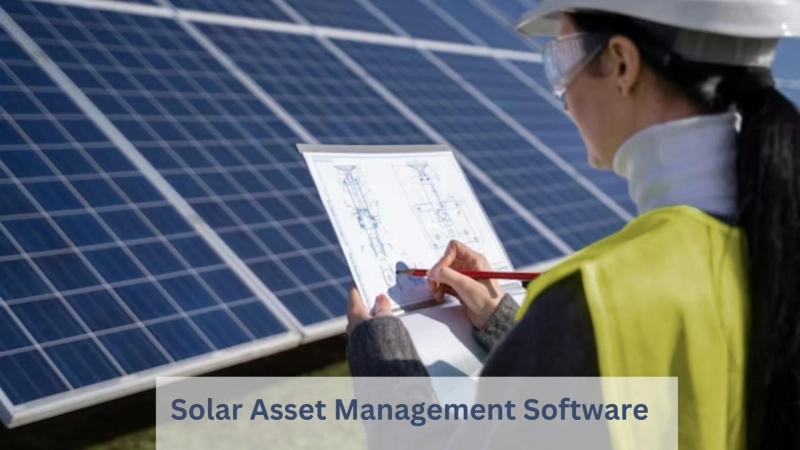The rapid growth of the solar energy industry has led to an increasing demand for efficient and reliable solar asset management (SAM) software. As solar installations become more widespread, the need for tools that can monitor, analyze, and optimize the performance of solar assets has become paramount. Developing robust solar asset management software requires a careful and systematic approach.
In this comprehensive guide, we will outline the step-by-step process of developing solar asset management software to meet the evolving needs of the solar industry.
Step 1: Define Objectives and Requirements
Before diving into the development process, it's crucial to define the objectives and requirements of the solar asset management software. Understanding the specific needs of solar asset managers, operators, and investors will guide the development process. This phase involves stakeholder consultations, market research, and a detailed analysis of the functionalities required, such as real-time monitoring, performance analytics, maintenance scheduling, and financial reporting.
Step 2: Choose the Right Technology Stack
Selecting the appropriate technology stack is a critical decision that will impact the performance, scalability, and flexibility of the solar asset management software. Factors such as programming languages, frameworks, databases, and hosting solutions should be carefully considered. Opting for scalable and secure technologies is essential to accommodate the growing volume of data generated by solar assets and to ensure the software's longevity.
Step 3: Design User-Friendly Interface
User experience is paramount in any software development project, and solar asset management software is no exception. The interface should be intuitive, easy to navigate, and provide a comprehensive overview of solar asset performance. Effective data visualization, customizable dashboards, and responsive design are key elements to consider during the user interface design phase. This step involves close collaboration between developers and user experience (UX) designers.
Step 4: Implement Real-Time Monitoring and Analytics
Real-time monitoring is at the core of solar asset management software. Developers must create robust algorithms and integrate sensors to collect data on energy production, system health, and environmental conditions. Analytics features should include performance metrics, fault detection, and predictive maintenance capabilities. Implementing machine learning algorithms can enhance the software's ability to predict and address issues before they impact solar asset efficiency.
Step 5: Ensure Data Security and Compliance
Given the sensitive nature of data collected from solar assets, ensuring robust data security measures is imperative. Implementing encryption protocols, secure APIs, and access controls helps safeguard against cyber threats. Additionally, compliance with industry regulations and standards, such as GDPR and ISO 27001, is crucial to build trust among users and stakeholders.
Step 6: Develop Maintenance and Workflow Automation
Efficient maintenance management is vital for maximizing the lifespan and performance of solar assets. Incorporate automation features to streamline workflows, schedule maintenance tasks, and generate automated reports. Predictive maintenance algorithms can identify potential issues in advance, reducing downtime and operational costs. This step involves integrating the software with asset management tools and establishing communication protocols with field technicians.
Step 7: Integrate Financial and Performance Reporting
Solar asset management software should provide comprehensive financial and performance reports to enable stakeholders to make informed decisions. Integrating financial modules for budgeting, revenue tracking, and expense management is crucial. Developers should also implement customizable reporting features that allow users to generate tailored reports based on key performance indicators (KPIs) and financial metrics.
Step 8: Conduct Rigorous Testing
Thorough testing is essential to identify and rectify any bugs, glitches, or security vulnerabilities in the solar asset management software. Conduct unit testing, integration testing, and performance testing to ensure the software functions seamlessly across different devices and platforms. Engage in user acceptance testing (UAT) with stakeholders to gather feedback and make necessary improvements before the official release.
Step 9: Implement Scalability and Flexibility
The scalability of solar asset management software is critical, considering the expanding size and complexity of solar installations. Design the software architecture to handle growing datasets and accommodate new features seamlessly. Additionally, building a modular and flexible system allows for easier integration with emerging technologies and evolving industry standards.
Step 10: Provide Ongoing Support and Updates
The development process doesn't end with the release of the solar asset management software. Continuous support, updates, and enhancements are essential to address evolving user needs, technology advancements, and industry changes. Establish a reliable support system, monitor user feedback, and stay abreast of industry trends to ensure the software remains cutting-edge and delivers long-term value.
Conclusion
In the ever-evolving landscape of the solar energy industry, the development of robust solar asset management software emerges as a crucial component for optimizing efficiency and ensuring the longevity of solar installations. This step-by-step guide has illuminated the key phases in creating a sophisticated solution that caters to the diverse needs of solar asset managers, operators, and investors.
As the demand for such software intensifies, the importance of considering to hire full stack developers cannot be overstated. A team of skilled and experienced full stack developers brings a holistic approach to the table, seamlessly integrating front-end and back-end functionalities. Their expertise in a wide array of technologies, from user interface design to database management and server-side scripting, ensures the creation of a comprehensive and high-performing solar asset management software.



